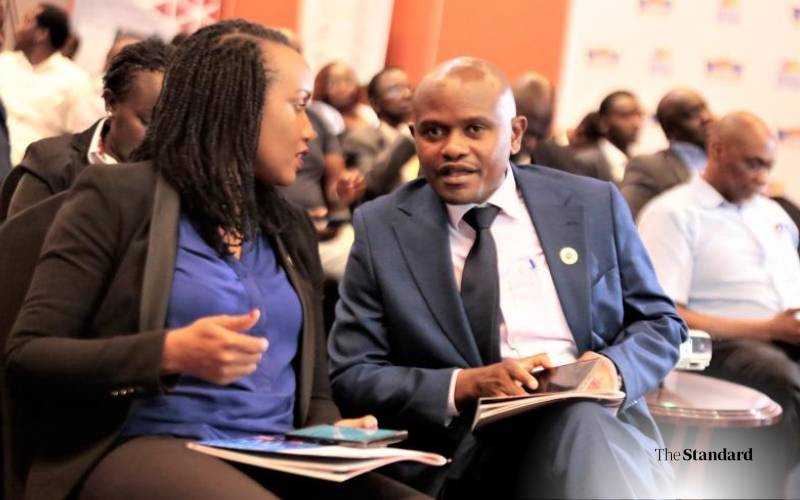Improving process flow with modernised manufacturing - Food & Beverage Industry News
When Peter Taitoko walks into a food manufacturing site, he doesn’t see walls and ceilings, he sees production lines, process flow, and possibilities. As the founder and director of RMR Process, Taitoko has made it his mission to help food and beverage companies rethink how they approach building or upgrading their facilities.
“We’re not a construction company,” Taitoko said. “We’re a company that focuses on the processes of manufacturing. We don’t focus on a new factory. For us, it’s all about how you make your products.”
The distinction matters. At a time when building costs are surging and manufacturers are under pressure to scale sustainably, Taitoko’s approach is saving clients time, money, and long-term headaches.
RMR Process starts with questions: What are you making? How do you make it? What’s your output now, and what will it be in five years?
It’s a reverse-engineered approach that places manufacturing and process design at the heart of the project. Only after those needs are mapped out does the facility itself begin to take shape around them.
“Most people start with the building,” Taitoko said. “But we start with the process. Because if you get that right, the building works itself out around it.”
It’s a subtle but necessary shift in mindset. In traditional factory development, builders and architects often lead the design, with the process team brought in later to fit equipment and flow into an already established space. The process-first approach results in tighter layouts, smarter material movement, and more efficient use of automation – all of which help drive down capital costs.
Taitoko’s background is rooted in the manufacturing world. That pedigree shows in RMR Process’s DNA. From ready meals to petfood to beverages, Taitoko and his team have worked across a range of categories, and they’re attuned to the pressures that food manufacturers face.
Not every RMR Process project involves building a new facility. In many cases, the company helps clients retrofit or repurpose existing infrastructure, which helps them minimise capital expenditure and avoid unnecessary downtime.
“Often, people think they need to build new because their current facility feels constrained,” Taitoko explains. “But when you look at the process, sometimes it’s not the space that’s the problem, it’s the layout, or the way the product is being moved, or the level of automation.”
Taitoko decided to set up RMR having spent years in the industry and seeing that he could save manufacturers a lot of time and money utilising his methods.
“I grew up building food factories and was on the tools as a fitter and welder,” he said. “I was lucky enough to get a job in an engineering fabrication business in NSW that worked with companies such as Mars and Nestle. Then I started studying at night for project management and business management.”
He then decided to start his own company, doing things his way. He gives an illustration of the types of insights he sees that a lot of other companies miss.
“When you’re process focussed, you’re thinking about how the operational staff will use the factory, how the utilities will be integrated, how much automation is required to gain efficiencies to minimise labour and energy costs,” he said. “Combine this with a design that achieves a cost-effective execution strategy, and the client will get a much better operational and capital cost outcome.”
By auditing existing processes and identifying pinch points, RMR can recommend upgrades that deliver exponential gains without major overhauls. That could mean repositioning a filler line, adding a conveyor, or rethinking cleaning-in-place systems to reduce downtime between product runs.
Taitoko is acutely aware of the pressure manufacturers face to control costs while keeping pace with demand. Construction, he notes, is one of the biggest capital outlays a food business will make, and one of the hardest to get right.
“When you base the facility design around the process, you avoid the trap of overbuilding or underbuilding,” he says. “You make more informed decisions about the level of automation you need, and that has a massive impact on the cost.”
This strategic restraint is appealing in a climate of rising material and labour costs. By focusing on how to make the product as efficiently as possible, rather than simply building for scale, RMR helps clients avoid investing in redundant infrastructure. Taitoko gives an example.
“We helped build a food factory in Western Sydney,” he said. “I think they paid $6 million for the site, and we did the project for $13 million. That’s $19 million for a world-class, state-of-the-art food facility that took eight months to build. The project had been cancelled before we got involved as they were told it would cost in excess of $30 million.
“They went to the building construction companies to find out how much it would cost for a new building. We told them, ‘Why not get an older building and just retrofit it?’ And that’s what we did.”
Taitoko said one of the main reasons the company wanted new premises was to build in redundancy as the business grew. This is where Taitoko’s process mindset came into play.
“I said to them, ‘Okay, we don’t know what the future looks like, but instead of building a bigger factory, why don’t we just incrementally replace your equipment and buy faster equipment?’” he said. “They might have a filler that can do 120 packs a minute. As capacity upscales, we can replace it with a filler that takes up no additional real estate but can do 300 packs a minute? It sounds simplistic but that’s the point, and it works.”
To guide clients through the journey, RMR starts with feasibility and ends with full commissioning support. Each phase builds on the last, establishing clear goals, reducing guesswork, and keeping project budgets and timelines on track.
The early phases are focused on understanding the client’s product, production method, and volumes. From there, RMR develops process concepts, identifies critical equipment, and defines the plant layout based on product flow, utilities, cleaning protocols, and quality systems. Only after the process design is optimised does the building design follow.
With each phase validated and scoped, surprises are minimised when it comes time to procure equipment or integrate services.
Importantly, RMR doesn’t just walk away after handing over the design package. They stay engaged during procurement, installation and commissioning, working closely with builders, electricians, and OEMs to ensure the system performs exactly as intended.
Taitoko’s team doesn’t just design for today; they think about the future, too. That long-term lens is baked into every layout and process recommendation.
That agility has become an advantage in a market where consumer preferences and regulatory expectations are evolving fast. Whether it’s accommodating allergen segregation or planning for clean-label production, RMR ensures that clients are ready to pivot without needing to rip out and rebuild core infrastructure.
RMR Process works closely with a network of partners, from equipment suppliers to architects and builders. In that sense, RMR serves as a bridge between manufacturing needs and facility design, translating complex production goals into practical, buildable solutions.
As the Australian food manufacturing sector looks to modernise, Taitoko believes process design will only become more critical. Sustainability goals, workforce challenges, and export ambitions are all putting pressure on businesses to do more with less, and that starts on the factory floor.
“At the end of the day, we have a look at how we can remove some of that risk for clients,” he said. “That’s what pushes the cost up. Everyone’s so risk averse, but sometimes they just need help identifying the priorities and how to get started, rather than doing nothing at all. That’s where we come in.”
For RMR Process, that means staying laser-focused on the core question: What’s the smartest way to make this product? Once you know that, everything else – from building design to automation choices – falls into place.
And in an industry where margins are tight and the stakes are high, that kind of clarity is a win-win for everyone.













